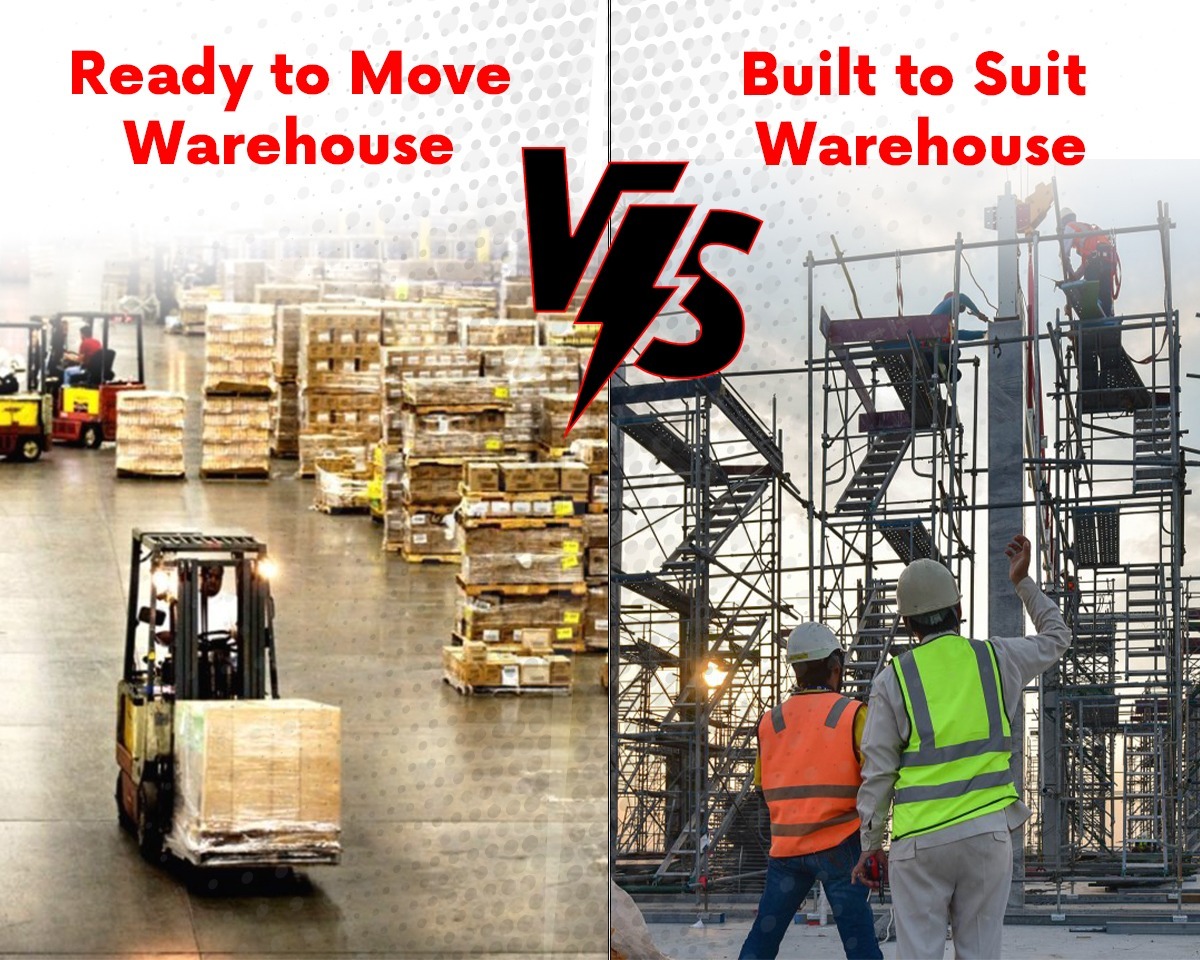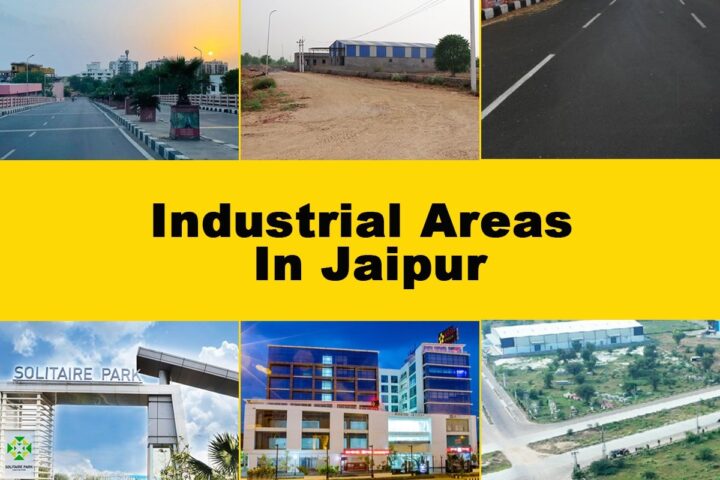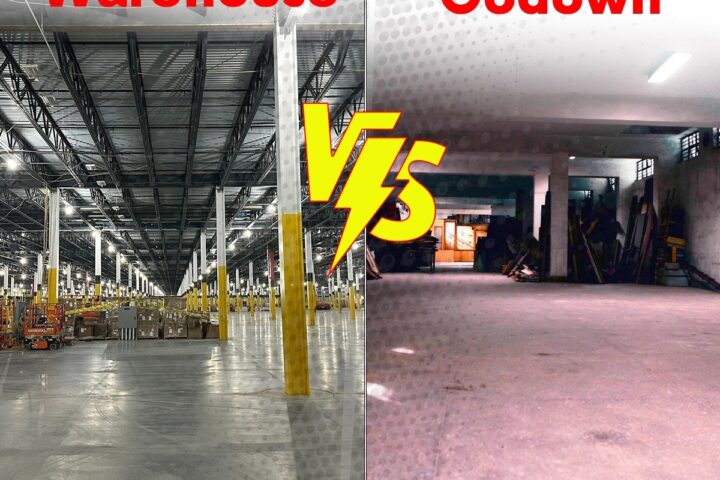The world of logistics and supply chain management is marked by a diverse array of warehouses, each tailored to meet specific business needs. Two prominent types that often come into focus are “Ready to Move” warehouses and “Built to Suit” warehouses. While both serve as crucial components of the supply chain, they differ significantly in their structures, functionalities, and advantages.
1. Conceptual Framework
Ready to Move Warehouse
As the name suggests, a Ready to Move (RTM) warehouse is a pre-constructed facility that is fully equipped and operational. These warehouses are built with a general layout in mind, incorporating common features and specifications suitable for various businesses. RTM warehouses are ready for immediate occupancy, allowing businesses to start their operations without the need for extensive modifications or customization.
Built to Suit Warehouse
On the other hand, a Built to Suit (BTS) warehouse is a facility specifically designed and constructed to meet the unique requirements of a particular tenant or business. In this case, the warehouse is developed from the ground up with input from the tenant, ensuring that every aspect of the facility aligns with the tenant’s operational needs and preferences.
2. Customization and Flexibility:
Ready to Move Warehouse
RTM warehouses, being pre-built structures, offer limited customization options. While they may come with standard features such as loading docks, office spaces, and storage areas, the layout and design are relatively fixed. Businesses opting for RTM warehouses must adapt their operations to the existing layout, which may not always align perfectly with their specific requirements.
Built to Suit Warehouse
On the flip side, BTS warehouses offer a considerable degree of customization and flexibility. Tenants have the opportunity to collaborate with developers and architects to create a warehouse that is tailor-made for their unique needs. This can include specific storage configurations, specialized equipment installations, and even adjustments to the overall layout to optimize operational efficiency.
3. Time and Cost Considerations:
Ready to Move Warehouse
One of the primary advantages of RTM warehouses is the speed of occupancy. Since these warehouses are pre-built, businesses can move in quickly, reducing downtime and allowing for immediate operational commencement. Additionally, RTM warehouses often come with a lower upfront cost compared to BTS warehouses, as the construction has already taken place.
Built to Suit Warehouse
BTS warehouses, while offering unparalleled customization, come with a longer lead time. The construction process involves detailed planning, design, and execution, which can extend the time before the facility is ready for occupancy. Furthermore, the cost of building a warehouse from scratch tends to be higher, reflecting the expenses associated with customization and construction.
4. Scalability and Long-Term Planning:
Ready to Move Warehouse
RTM warehouses may pose challenges for businesses with specific long-term growth plans or unique operational requirements. While they provide immediate solutions, they may lack the scalability needed to accommodate significant changes in the business environment or expansion strategies.
Built to Suit Warehouse
BTS warehouses are inherently designed to align with a tenant’s long-term vision. The customization process allows businesses to factor in scalability and future growth, ensuring that the warehouse can adapt to changing needs over time. This makes BTS warehouses a strategic choice for businesses with evolving requirements.
5. Market Availability and Location:
Ready to Move Warehouse
RTM warehouses are often readily available in established industrial zones and logistics hubs. They are suitable for businesses that prioritize quick access to existing infrastructure and transportation networks.
Built to Suit Warehouse
The location of a BTS warehouse depends on various factors, including the tenant’s preferences and specific operational requirements. This flexibility in choosing the location allows businesses to strategically position their warehouses based on supply chain dynamics and market demands.
In conclusion, the choice between a Ready to Move warehouse and a Built to Suit warehouse boils down to the specific needs and priorities of the business. Ready to Move warehouses offer quick occupancy and cost savings, while Built to Suit warehouses provide unparalleled customization and long-term flexibility. Businesses must carefully assess their current and future requirements, considering factors such as speed, cost, customization, and scalability, to make an informed decision that aligns with their strategic objectives in the dynamic landscape of logistics and supply chain management.


